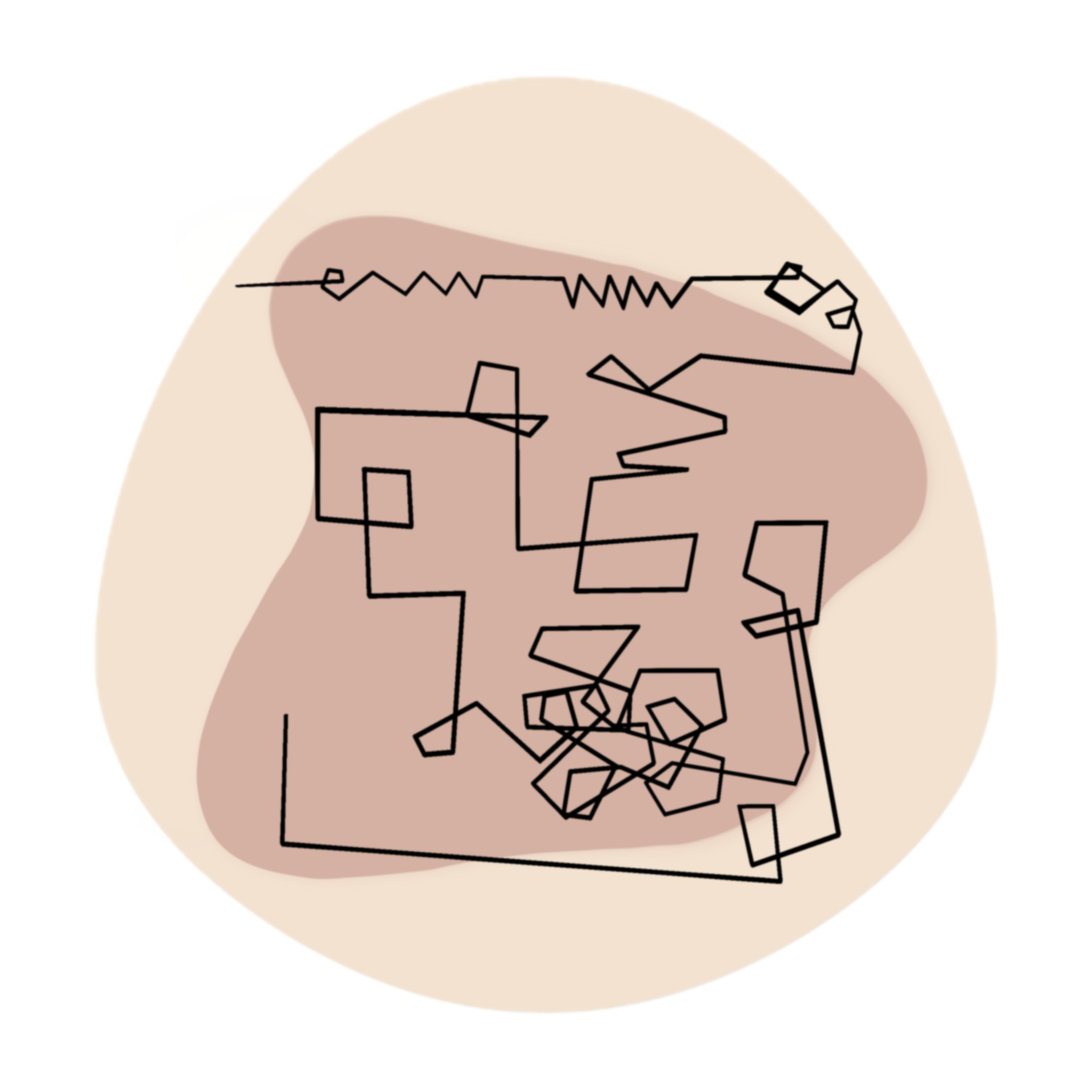Carrier Bag Theory of Fiction
I have been greatly inspired by the late author Ursula K. Le Guin’s essay, The Carrier Bag Theory of Fiction. In this essay, she introduces anthropologist Elizabeth Fisher’s hypothesis that the “first cultural device was probably a recipient... a container to hold gathered products,” something akin to a net or pouch (Le Guin, 1988/2019, p. 29). This would be an opposing story from the ones illustrated on cave dwelling walls; the stories that tell of the spear device wielded by hunters, whose instinct for survival, still runs through us today. The hero’s story has been told repeatedly: our hero and his triumph over (an)other.
Le Guin (1988/2019) urges us to see that it is time for a new kind of story, a story without a single hero with a spear, instead, a community with a carrier bag. Wielding a carrier bag has its own kind of story attached to it, perhaps better said, held within it. This carrier bag holds history, culture, wisdom, inherited losses, trials and errors, lessons learned, and problems still to be solved. It makes interesting the magnificence of the mundane. This bag is not rigid, projected from here to there; it is flexible, lopsided, it holds its things in layers, messy layers that become entangled as we move about over time, and it is permeable; things move in and out. This carrier bag is not a weapon; it does not pierce, and it cannot slay a villain. However, it can hold things for us, help us to transport, store, and sustain things. Providing us with expanded potentials in each moment; we do not have to pick up or put down, it gives us choices, possibilities, it slows and stills things a bit.
Improvisation Over Re-action
In a blog post titled A Slower Urgency, Bayo Akomolafe recites a “particular saying” in Africa, “the continent [he] grew up on”, it says, “the times are urgent; let us slow down”. He goes on to explain that in the haste of re-acting, we regress to our old patterns, distracting us from the opportunities or choices that are around us. This re-action, a re-iteration of past doings, is easiest, most familiar, and whittles away at creativity, that is, creativity in the sense of creating novel happenings. When we re-act, we place ourselves outside of the in-act. Being in-act refers to being present and experiencing the immediate process of becoming; it brings us from there to here. When we slow down, we can pause and draw from our carried gatherings, improvise in a form of rooted spontaneity. Our lives are full of twists and turns, developed skills, and ideas that never see the light of day, not because they are use-less but because they are not of use-yet. When we slow down and perform the in-act, such as the artist, the musician, and the dancer, re-action turns to improvisation, creativity, and novel experience….. In Process
Play
Play is a carrier bag that holds culture, experiences, and possibilities. During play, children draw from this realm of possibilities to ingress potential experiences into actuality (Whitehead, 1929/85). This carrier realm lets children suspend the what-may-be of imagination, hanging on to it, until the perfect opportunity for improvisation calls for it. However, this carrier realm also holds for other types of things. It exists in context and over time, it holds inherited experiences and historical legacies, social discourses, and prototypes. These all mix together in the carrier bag, so when possibilities are pulled out, they will have the residue of these things on them. This is not something that can just be wiped away; it becomes a part of the possibilities; it clothes them with a particular qualitative character (Whitehead, 1929). What happens to the possibilities when they meet the constraints of society? Does this flatten the expansive nature of creativity within play?
Play is a special condition of experience: mistakes are accepted, children become braver, push their limits, create ideas, and build skills, all of which is enjoyable in the present or may be useful later on. Even though the realm of play is said to be seperate from the ‘real world’, the constraints of society are not removed altogether; they are softened though. Play provides a certain kind of veil of leniency, permission of sorts to imagine differently, try new things, and experiment, however, a child can only pull into improvisation what exists within their awareness and what they deem possible. Our duty is to continually add to the carrier bag so that children have a plethora of possibilities, and to empower children to think for themselves and try out different ways of being in the world. I encourage us to bring our focus back to filling the bag rather than placing value on what is in the bag. Because it is not for us to tell children how to play, or what to be, they have the capacity to do that. We just need to ensure that they feel safe and are aware of all the potentials available for creation. …In Process…..
References:
Le Guin, U., K. (1988). The Carrier Bag Theory of Fiction. Ignota. (2019).
Whitehead, A., N., (1929). Process and Reality. Free Press (1985).

